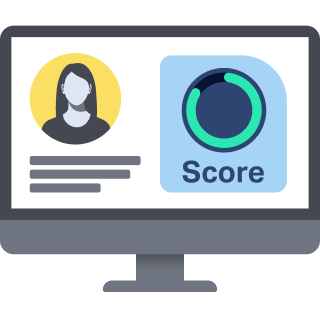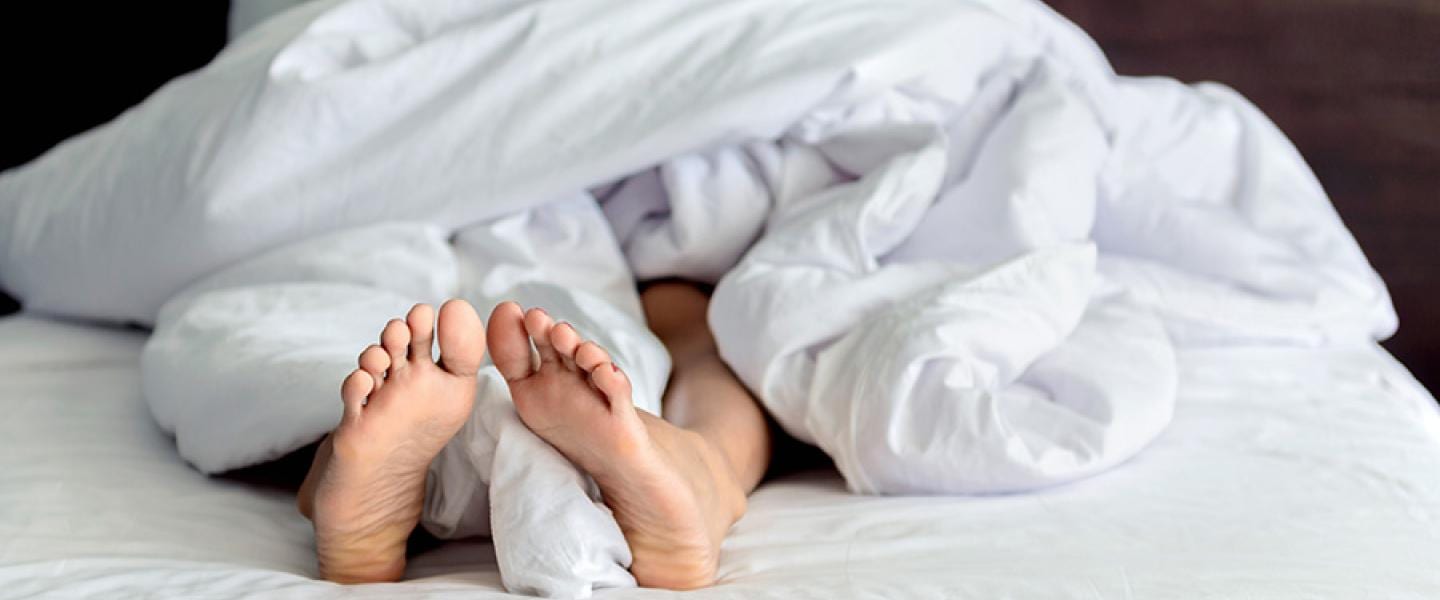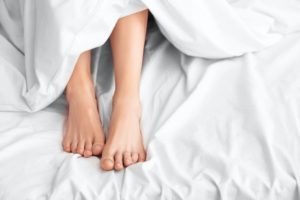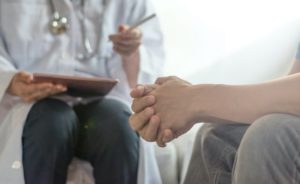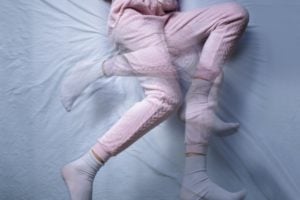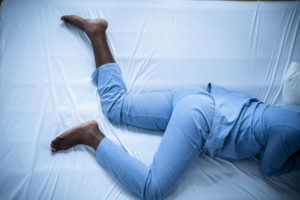Restless Legs Syndrome (RLS) Symptoms
Restless legs syndrome (RLS), or Willis-Ekbom disease, is characterized by an overwhelming urge to move the legs, which is often accompanied by unpleasant sensations. Though first described in the 1600s , it was only recently that experts established a set of formal criteria for RLS. Today, healthcare professionals take several different facets into account when diagnosing RLS.

Restless Legs Syndrome Symptoms
Diagnosing RLS is tricky because it cannot be measured or detected by scans or similar tests. Instead, an RLS diagnosis depends purely on subjective symptoms as described by the patient. This makes it all the more important to have a clear set of guidelines about which sensations indicate that a patient might have RLS When diagnosing RLS, doctors look for the following criteria :
- The patient experiences an urge to move their legs, and sometimes their arms or other body parts, which is often associated with uncomfortable sensations. These urges and sensations:
- Are triggered when the body is inactive or at rest;
- Are temporarily relieved by moving the affected body part;
- Only occur, or significantly worsen, in the evening and at night; and,
- Are not a symptom of another condition , such as leg cramps.
Additional factors that may also support a diagnosis of RLS include having a close family member with RLS, noticing an improvement in symptoms after being treated with RLS medication, associated sleep disturbances, and/or following the expected patterns of RLS development. In addition, a majority of individuals with RLS also experience periodic limb movements of sleep (PLMS) that can cause nighttime awakenings and disrupt a sleeping partner.
What Does It Feel Like to Have RLS?
Part of the reason RLS has traditionally been underrecognized is that the exact feelings it causes change from person to person and are sometimes difficult to pin down . RLS patients use the following terms to describe the sensations that they commonly feel inside the shin, or between the knee and ankle:
- Tingling
- Creeping
- Burning
- Tugging
- Aching
- Itching
- Throbbing
- Pulling
- Like having insects crawling inside the legs
For some people, these sensations are merely uncomfortable. For others, they may actually cause pain. Symptoms range from mild to severe and may occur occasionally, a few times a week, or every night. They may disappear for weeks or months at a time and then come back. The sensations are usually felt on both sides of the body, though some people may find they alternate back and forth or stay limited to one side. The severity of RLS symptoms generally increases with age.
People with RLS often resort to a variety of movements to get relief, such as stretching, rubbing or kicking the legs, as well as getting up and walking around. This constant movement makes it difficult to settle down for sleep. For some people, deep sleep is only possible in the early morning, when symptoms tend to be less severe. However, their symptoms present, individuals with RLS frequently report sleep problems and corresponding fatigue the next day.
RLS is more prevalent in women than in men, and preliminary evidence also suggests that RLS symptoms may vary between genders . Men may be more likely to have periodic leg movements during sleep and experience less deep sleep as a result. In contrast, women appear to suffer more from sensory symptoms, leading to less satisfying sleep overall.
Restless Legs Syndrome in Children
Though RLS most commonly affects adults, it can also develop in children . Researchers believe that many cases of childhood RLS may go undetected for a number of reasons. Children can have trouble communicating their experiences, meaning that symptoms may be mistakenly attributed to other causes such as growing pains, motor tics, muscle pain, leg cramps, or sleep apnea. RLS also affects sleep, which can cause secondary effects such as hyperactivity or moodiness that are easily mistaken for attention deficit hyperactivity disorder (ADHD). For example, parents may observe their child being restless and fidgety in situations where they are required to sit still, such as a classroom or at the movies. . Children with RLS often find it difficult to stop these compensatory movements, regardless of where they are.
Diagnosis of restless legs syndrome in kids is based on the same criteria that are used for adults , though children may describe their symptoms differently than adults. When evaluating a child for RLS, a doctor may ask them to describe their symptoms in their own words. Some common phrases used by kids with RLS to describe their symptoms include “energy in my legs,” “want to run,” “creepy crawlies,” or “boo-boos.”
Children with RLS frequently complain of pain, with symptoms that can be soothed by applying heat or cold, leading to potential confusion with growing pains. One way to differentiate the two conditions is to see whether the pain stops using the classic RLS remedy of moving the legs.
Doctors may also collect observations of symptoms consistent with RLS when the child is sitting or lying down. In addition, they may assess for sleep disturbance, check for periodic limb movements during sleep, or ask if other family members have RLS.
When to See a Doctor
You should talk to your doctor if you believe you might have RLS, or if your symptoms are causing you distress or interfering with sleep. They will ask you a series of questions to narrow down the diagnosis. Though there is no specific test for restless legs syndrome, researchers are working on developing questionnaires that can help with the diagnostic process.
During a standard RLS evaluation, you will usually be asked to describe how your symptoms feel, when they tend to occur, how long they last, how intense they are, and what makes them worse or better (for example, moving your legs). Your doctor may also ask you if your symptoms are causing you pain or interfering with sleep. If you sleep with a partner, the doctor may ask them about potential symptoms they may observe while you are sleeping. You will also need to provide information about your medical history and which medications you currently take.
Sometimes, doctors will order a sleep study to see whether you have symptoms of PLMS and to rule out other underlying sleep disorders. Your doctor may also run other tests to see if any other condition is causing or exacerbating your symptoms, such as iron deficiency anemia, kidney failure, or pregnancy.
References
11 Sources
-
Berger, K., Luedemann, J., Trenkwalder, C., John, U., & Kessler, C. (2004). Sex and the risk of restless legs syndrome in the general population. Archives of Internal Medicine, 164(2), 196–202.
http://archinte.jamanetwork.com/article.aspx?doi=10.1001/archinte.164.2.196 -
Cotter, P. E., & O’Keeffe, S. T. (2006). Restless leg syndrome: is it a real problem?. Therapeutics and Clinical Risk Management, 2(4), 465–475.
https://pubmed.ncbi.nlm.nih.gov/18360657/ -
Allen, R. P., Picchietti, D. L., Garcia-Borreguero, D., Ondo, W. G., Walters, A. S., Winkelman, J. W., Zucconi, M., Ferri, R., Trenkwalder, C., Lee, H. B., & International Restless Legs Syndrome Study Group (2014). Restless legs syndrome/Willis-Ekbom disease diagnostic criteria: updated International Restless Legs Syndrome Study Group (IRLSSG) consensus criteria–history, rationale, description, and significance. Sleep Medicine, 15(8), 860–873.
https://linkinghub.elsevier.com/retrieve/pii/S1389945714001907 -
Schwab, R. J. (2020, June). Periodic limb movement disorder (PLMD) and restless legs syndrome (RLS). Merck Manual Consumer Version., Retrieved January 23, 2021, from
https://www.merckmanuals.com/home/brain,-spinal-cord,-and-nerve-disorders/sleep-disorders/periodic-limb-movement-disorder-plmd-and-restless-legs-syndrome-rls -
National Institute of Neurological Disorders and Stroke (NNDS). (2017, May). Restless Legs Syndrome Fact Sheet., Retrieved January 23, 2021, from
https://www.ninds.nih.gov/Disorders/Patient-Caregiver-Education/Fact-Sheets/Restless-Legs-Syndrome-Fact-Sheet -
Holzknecht, E., Hochleitner, M., Wenning, G. K., Högl, B., & Stefani, A. (2020). Gender differences in clinical, laboratory and polysomnographic features of restless legs syndrome. Journal of sleep research, 29(3), e12875.
https://pubmed.ncbi.nlm.nih.gov/31162763/ -
Picchietti, D., Allen, R. P., Walters, A. S., Davidson, J. E., Myers, A., & Ferini-Strambi, L. (2007). Restless legs syndrome: prevalence and impact in children and adolescents–the Peds REST study. Pediatrics, 120(2), 253–266.
https://publications.aap.org/pediatrics/article/120/2/253/70452/Restless-Legs-Syndrome-Prevalence-and-Impact-in -
Maheswaran, M., & Kushida, C. A. (2006). Restless legs syndrome in children. MedGenMed : Medscape general medicine, 8(2), 79.
https://pubmed.ncbi.nlm.nih.gov/16926818/ -
Picchietti, D. L., Bruni, O., de Weerd, A., Durmer, J. S., Kotagal, S., Owens, J. A., Simakajornboon, N., & International Restless Legs Syndrome Study Group (IRLSSG) (2013). Pediatric restless legs syndrome diagnostic criteria: an update by the International Restless Legs Syndrome Study Group. Sleep medicine, 14(12), 1253–1259.
https://linkinghub.elsevier.com/retrieve/pii/S1389945713010708 -
Walters, A. S., Frauscher, B., Allen, R., Benes, H., Chaudhuri, K. R., Garcia-Borreguero, D., Lee, H. B., Picchietti, D. L., Trenkwalder, C., Martinez-Martin, P., Stebbins, G. T., Schrag, A., & MDS Committee on Rating Scales (2014). Review of diagnostic instruments for the restless legs syndrome/Willis-Ekbom Disease (RLS/WED): critique and recommendations. Journal of clinical sleep medicine : JCSM : official publication of the American Academy of Sleep Medicine, 10(12), 1343–1349.
https://pubmed.ncbi.nlm.nih.gov/25348242/ -
Trenkwalder, C., Allen, R., Högl, B., Paulus, W., & Winkelmann, J. (2016). Restless legs syndrome associated with major diseases: A systematic review and new concept. Neurology, 86(14), 1336–1343.
https://pubmed.ncbi.nlm.nih.gov/26944272/



